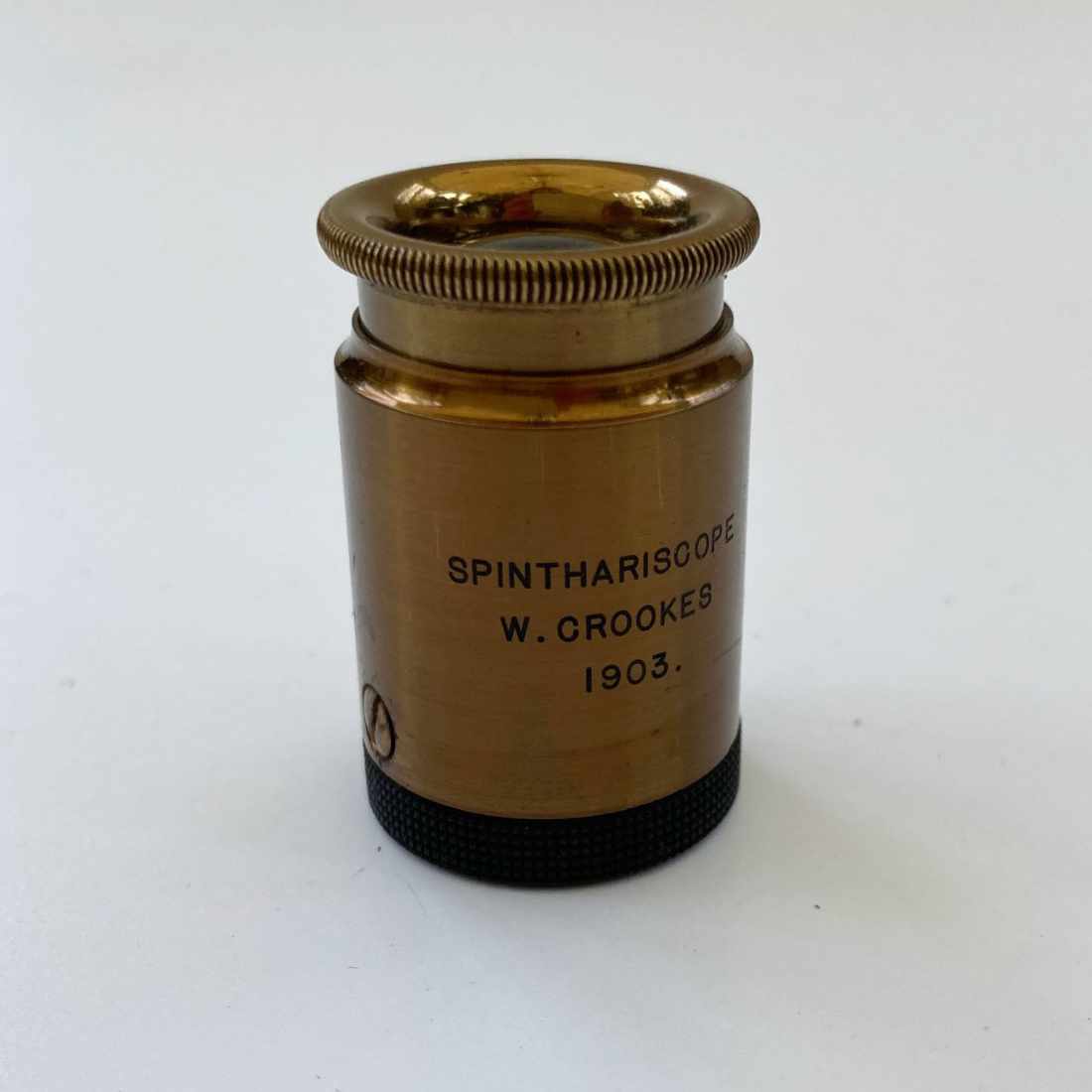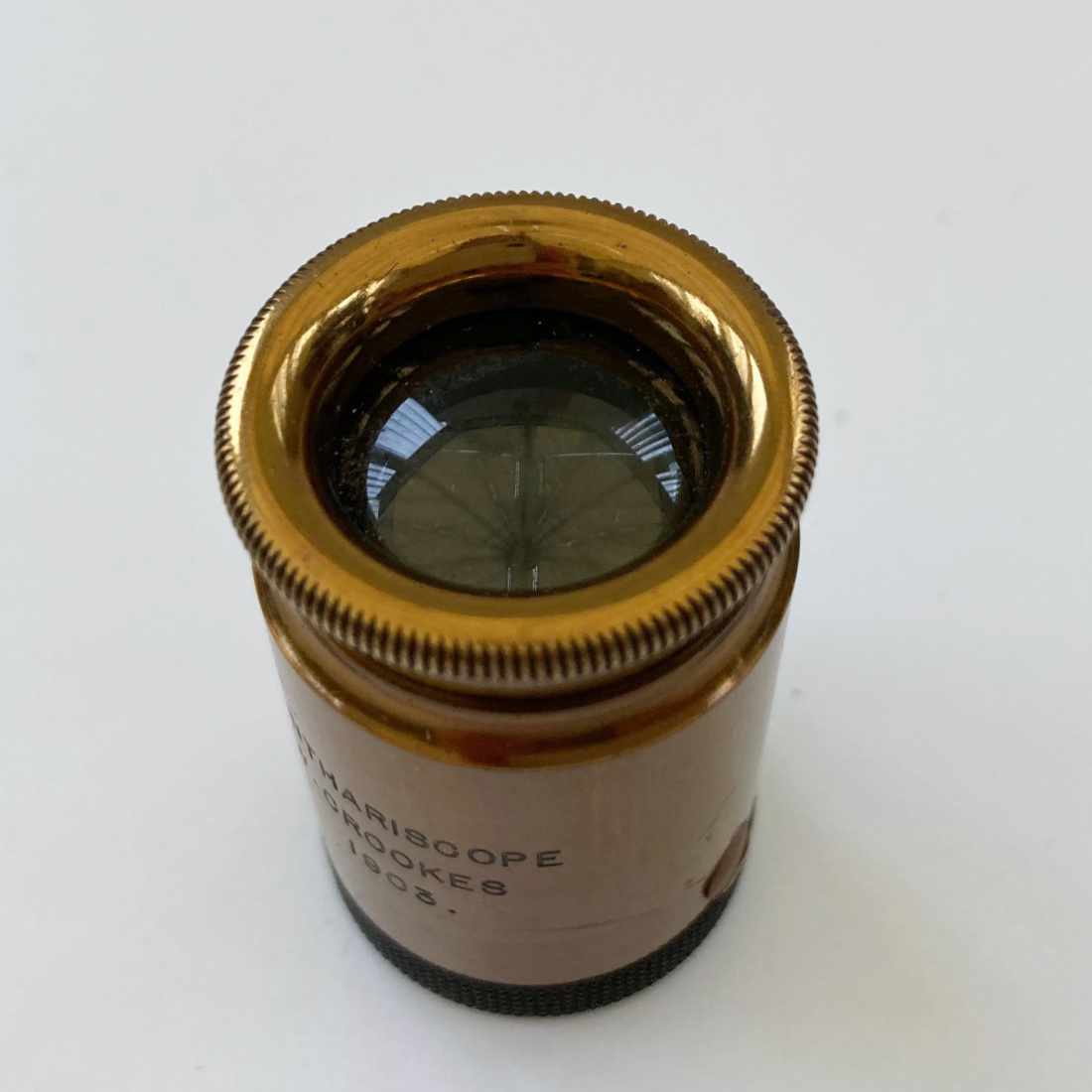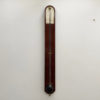Description
For sale an Edwardian period cased William Crookes Spinthariscope
Comprised of a 1” diameter brass tube, one and a half inches in length, with convex eyepiece to one end for observation and ebonite base with knurled edge and adjusting wheel to one side. The side of the tube is engraved “Spinthariscope – W. Crookes 1903”
This fascinating instrument retains all of its original lacquer and is complete with its original two part card and leather case.
The below is an extract from “Half Lives: The Unlikely History of Radium” by Lucy Jane Santos which provides a very good insight into both Crookes unlikely discovery and the social impact at the time.
“Radium became closely associated with high society, fashion and entertainment when Sir William Crookes (creator of the aforementioned tube) debuted his new invention, the spinthariscope (from the Greek word spintharis, meaning a scintillation or flash of light), at a meeting of the prestigious Royal Society on 15 May 1903 in London.
Crookes later explained how he had been experimenting with a mixture of radium salts when he accidentally knocked over some crystals, scattering them over a zinc sulphide screen (Crookes, like many of his contemporaries, was also a very skilled photographer and this equipment was kept around their laboratories.). Mindful of the small amounts of radium in his possession, and not wanting to waste any, Crookes had used a microscope to make sure that all of the radium mix was recovered.
While looking through the lens Crookes was intrigued to note (rather like Röntgen’s chance discovery less than ten years before) that the zinc sulphide screen gave off flashes of light. While Crookes initially thought that the flashes were the alpha particles themselves it soon became apparent that the light was actually the particles bombarding the screen. Although he didn’t know it at the time, what he was seeing were the traces of the radium decay process outlined by Rutherford and Soddy. Like the barium platinocyanide screen in Röntgen’s experiments, the zinc sulphide glowed because it was absorbing the energy of the rays (although in this case it was alpha rays) and then re-emitting it as visible light. Crookes described his revelation in the journal Chemical News (which he had founded in 1859 and continued to edit): ‘each luminous spot is seen to have a dull centre surrounded by a luminous halo extending for some distance around. The dark centre itself appears to shoot out light at intervals in different directions. Outside the halo the dark surface of the screen scintillates with sparks of light. No two flashes succeed one another on the same spot, but are scattered over the surface, coming and going instantaneously, no movement of translation being seen.’
Crookes decided to build an elegant little scientific instrument to demonstrate these atomic disintegrations of radium to his colleagues. Measuring less than two inches in length, the spinthariscope is a small and portable cylindrical device – a cross between a kaleidoscope and a Geiger counter (a counting device which was first built by German physicist Hans Geiger in 1908 and which would later replace the spinthariscope as a way of measuring radioactivity). At one end of the tube is a microscope lens, which you look through; at the other is a screen with a speck of radium salts placed just in front of it. By adjusting a tiny mechanism at this end, you can move the position of the sample of salts which, if you bring the source closer, effectively increases the speed at which the alpha particles hit the screen and therefore the number of flashes visible to the viewer. Conversely if you move the source of radium salts away from the screen the alpha particles have to travel further, and the visible bombardment of the screen is slower.
At the Royal Society event Crookes had the perfect audience for his spinthariscope debut – not only Fellows of the society but also people with a high public profile who were fascinated by the sciences, including Prince George, the Prince of Wales. The spinthariscope was a huge success with the attendees, overshadowing the other scientific discoveries on display.
Crookes, who always kept an eye open for the most profitable commercial opportunities, did not patent the device. Instead, he entered into legal agreements with instrument makers such as R. & J. Beck, A.C. Cossor, Griffin & Tatlock and the wholesale pharmaceutical chemists W. Martindale of New Cavendish Street, London, who would produce the spinthariscopes. It is not known precisely what agreement Crookes had with these manufacturers, but the surviving examples of spinthariscopes from this period are all based on the same design.
While devices like these were primarily intended for the scientific world and advertised in scientific journals, the spinthariscope also became a huge, if somewhat unlikely success with society women and those with disposable income. The spinthariscope was the more prestigious device specifically because it contained radium – which, according to the fashion of the day, was the much more sought-after substance. Its association with the well-known Crookes would have also added to its desirability.
For those people who purchased a spinthariscope the device was more than just a scientific instrument (even if it was a very interesting one in its own right): it was part of a growing craze for radium that reached out of the pages of science and medical journals and into the homes and pockets of the wealthy as a status symbol and an acknowledgement of the latest in scientific popularism.”
Please note: this item is not functioning and does not contain any radium.
Circa 1903















